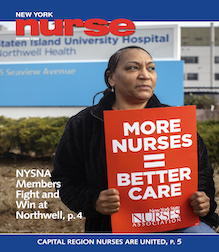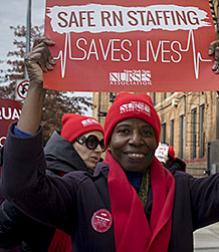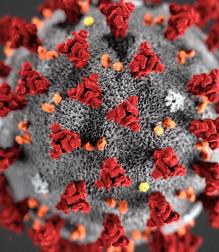The CDC said it in May. The FDA said it in June. “The PPE crisis is over.” “Crisis strategies are not needed.” “Time to return to normal.” The FDA also revoked its emergency authorization for the use of KN95s and other substandard equipment, and told employers to stop the “disinfection” and reuse of N95s.
Then why have virtually none of our employers returned to the “conventional” use of N95s?
Rolling back protections
Before March, 2020 “conventional” use of N95s was the only use of N95s in healthcare. Traditionally an N95 was required to provide care in the context of known or suspected transmissible airborne pathogens, such as TB, with a new one available for every patient care session. It was unheard of to use the same N95 for multiple patients or to continue to wear it in and out of isolation rooms over longer periods of time. You used it and disposed of it, as with gloves and other disposable PPE. And if you didn’t follow these protocols, you could be disciplined for poor infection control practices.
Although numerous pandemic preparedness reports had warned of potential supply-chain problems with single-use disposable respirators and other PPE, healthcare facilities resisted the move to safer, reusable elastomeric and PAPR respirators. Unprepared for the SARS-CoV-2 outbreak, or the subsequent pandemic, but well-prepared to lobby government agencies, the American Hospital Association and similar regional employer organizations swiftly went into action in early 2020, demanding that worker PPE guidelines be rolled back. The CDC, pressured by the healthcare industry, insisted that COVID infection was limited to contact and droplet transmission although there were already many reports clearly showing that airborne transmission was a significant factor in spreading the disease. The refusal to recognize airborne transmission was based less on science and more on the shortage, and increased price, of N95s.
As a result of fast and forceful action by NYSNA members, many of the worst-case PPE scenarios — using the same N95 for a week or more or not having N95s at all — were avoided or stopped and NYS authorities directed that frontline workers receive at least one new N95 per shift. Still, many of our employers balked at, delayed or restricted the use of N95s exclusively to aerosol-generating procedures, and some even went so far as to use unsafe reprocessing measures to recycle used N95s over and over again.
Give an inch…
Members had to fight for bare bones protection during the height of the pandemic, and many went without proper PPE. Now with improved access to N95s, NYSNA members are once again faced with foot dragging on the part of employers. “Every NYSNA employer should return to conventional use of N95s and other PPE immediately,” NYSNA President Nancy Hagans, RN, said. “When convenient for them, the employers readily point out that they must follow CDC guidance, even if poor. But when the CDC and FDA are telling them to stop the crisis use of PPE, they simply ignore it.”
…Take miles and miles
The CDC and FDA gave employers an inch — in fact many inches — of leeway. Now they are taking miles and miles by refusing to return to regular practice, putting our members and others at risk.
Bottom line, healthcare employers have fought against worker protection for decades, even when it has flown in the face of essential infection control practices. During the HIV and Hepatitis B crises of the ‘80s they fought against the use of PPE and the OSHA Bloodborne Pathogen Standard. They opposed the use of respiratory protection around TB. In both cases, healthcare workers fought back and won regulations that saved innumerable lives.
We need to take a stand now for restoration of conventional PPE use, and continue to push for a full array of worker protections against airborne pathogens.
“As access to domestic supply of disposable respirators continues to significantly improve, health care organizations should transition away from crisis capacity conservation strategies that were implemented at the onset of the pandemic.” - Suzanne Schwartz, M.D., M.B.A., director of the Office of Strategic Partnerships and Technology Innovation in the FDA’s Center for Devices and Radiological Health. June 30, 2021.
“Situational update as of May 2021: The supply and availability of NIOSH-approved respirators have increased significantly over the last several months. Healthcare facilities should not be using crisis capacity strategies at this time and should promptly resume conventional practices.”
— CDC Website, accessed July 12, 2021




